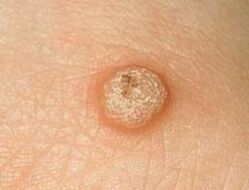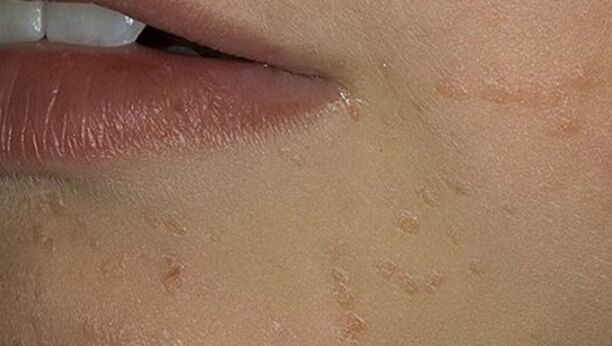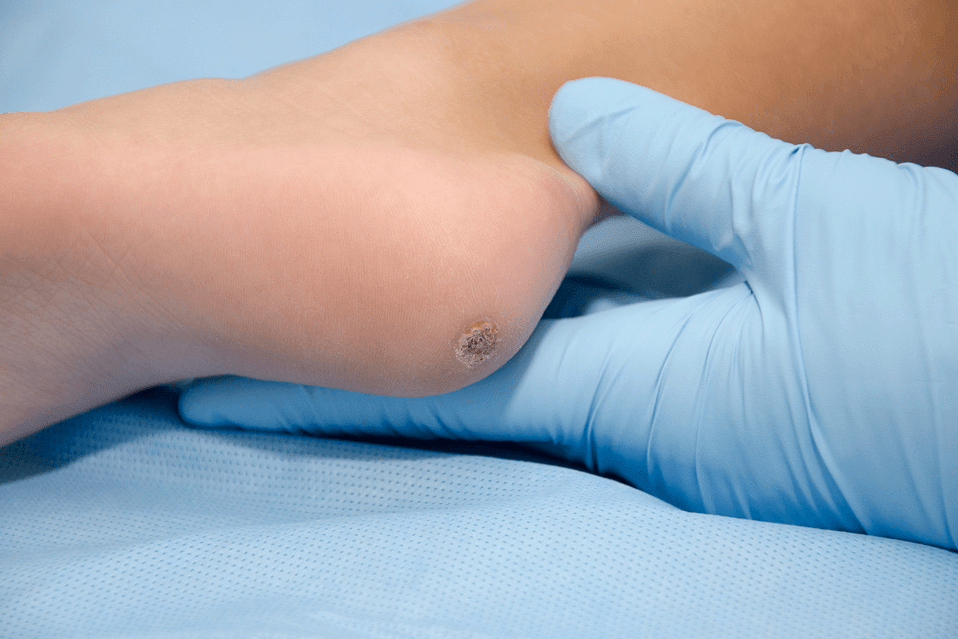Warts are benign (unlike malignant - no cancer cell formation) skin formations that form under the influence of various representatives of the human papillomavirus (HPV) family, of which there are more than a hundred. Warts have no gender and age barriers: their prevalence is the same between both sexes and does not depend on age.
How Infections and Causes of Warts

Papillomavirus is spread by contact: direct contact with a carrier (handshake), or through contaminated household items and the environment (in bathtubs, showers, swimming pools, etc. ). But don't shy away from an outstretched hand from a colleague or good friend: the conditions of the infection are an unfavorable combination of factors:
- Skin cracks and microtrauma, chronic scratches. Risk groups - people who, depending on the nature of their professional activity, engage in wet or hand washing: they have many microtraumas on their skin;
- Low immunity (indicator - frequent colds);
- Excessive sweating of hands and feet.
If everything goes wrong, the first warts will appear within 1. 5-6 months: this is the incubation period for viral infections caused by HPV.
Types and symptoms of warts
common (also called vulgar) warts
This wart accounts for 2/3 of all skin warts. Again, these warts are age-readable: they often appear in children and young students.
Favorite areas for dislocated warts are the hands (palms and back), fingers, and sometimes (which is very unpleasant from an aesthetic point of view) the face. The appearance of a common wart is very unpretentious: a round seal nodule, ranging in size from a pinhead to a small pea. The color does not stand out on the skin. A single wart is rare: there are usually several or the whole spread. Also, one of the warts is the largest and it is the so-called maternal wart. If you eliminate it, the rest will fall on its own.
Flat (juvenile) warts

Another representative of "young" warts affecting 10 to 25 year olds. They are small, flat papules that protrude only slightly on the surface of the skin and have a smooth (sometimes scaly) surface. The color is flesh-colored, sometimes with a tinge of yellow. Most often, flat warts appear on the backs of the hands, wrists, face, and neck. Sometimes - on the head of the penis.
plantar warts

These warts are characterized by increased pain, especially when walking. On the surface, plantar warts can be difficult to distinguish from calluses. They can be convex or concave. Plantar warts appear to live up to their name - on the sole, where the friction is greatest.
Senile (Seborrheic) Warts

Benign epithelial tumors that develop over many years and occur in old age are called senile warts. Initially, it is a small brown spot that increases in diameter by 5-6 cm over time. Senile warts (also called seborrheic keratomas) have a greasy, crusted surface. Over time it will thicken and its surface will be cracked and actually full of dark brown. Senile warts form in enclosed areas of the body, but they can sometimes annoy unwitting owners on the face, neck, and extremities.
Condyloma acuminatum (genital warts)
These warts have specific locations: genitals, perineum, vaginal opening, and anus. They can occur in the armpits, under the breasts of women, and in children - the nasolabial folds. In appearance, they are often compared to celosia or cauliflower due to their lobed structure. Warts are flesh-colored or pale pink in color, but if you rub them, they turn a deep red and start to bleed. They form large colonies.
Diagnosis of warts
Diagnosing warts isn't difficult, and it's not rocket technology for you. Just look at the clinical manifestations of these unwanted growths. Plantar warts are distinguished from common calluses by their papillary structure, and genital warts are distinguished from the generalized warts that are a hallmark of secondary syphilis by their higher consistency, broad base, and moist surface.
wart treatment
Warts are removed medically or mechanically. Given their viral "nature", they fight accordingly: Antiviral creams are prescribed. This will prevent the wart from spreading to undeveloped areas. In folk methods, the latex of celandine, which stands out on the cut of the plant, has become popular.
Even in the most advanced cases, electrocoagulation (exposure to electrical current + heat) can help remove warts.
Cryotherapy (freezing with liquid nitrogen) is great for treating common warts. The procedure is virtually painless, which makes it child-friendly.
The treatment of plantar warts is complex: first - destruction by cryotherapy, then - surgery, where the affected tissue area is removed under local anesthesia.
Laser therapy is also used, using different types of beams. Affected areas rely on this evaporation or condensation.
Usually warts are not particularly problematic, but do recur. In about half of the cases, they go away on their own without any treatment.
As a precautionary measure, it is advisable to respond to even a wart and take immediate steps to eliminate it.























